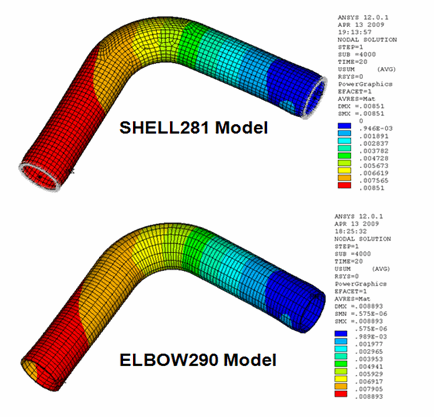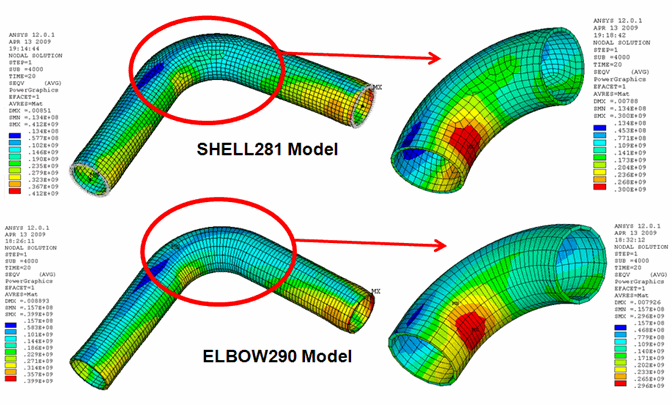This section examines the results of both the modal analysis of the global piping system and the nonlinear static analysis of the local elbows:
Following is a comparison of the fundament natural frequency of entire piping system with the expected experimental result [1]:
| Fundamental Frequency of Entire Nuclear Piping System | ||
|---|---|---|
| Modal Analysis Results | Measured Value in Experiment | |
| With Prestress Effects | Without Prestress Effects | |
| 6.3 Hz | 6 Hz | 5.9 - 6.3 Hz |
The close agreement between the simulation and the expected results validates the methods used in this analysis:
The final deformed shape of the local ELBOW290 model matches closely with that of the local SHELL281 model, as shown:
Von Mises stress and total mechanical strain for both models are shown respectively in the following figures:
Again, the close agreement between the stress and strain results from the two models is apparent.
Following is a comparison of the local ELBOW290 and SHELL281 elbow models in terms of computational efficiency:
| ELBOW290 Local Elbow Model | SHELL281 Local Elbow Model | |
|---|---|---|
| Number of elements in the FEA model | 100 | 3009 |
| Simulation time required | Simulation time for the ELBOW290 model is observed to be approximately 53 percent less than that of the SHELL281 model | |
| Disk usage | Disk space usage for the ELBOW290 model is observed to be approximately 64 percent less than that of the SHELL281 model. | |
While offering simplicity for line-based modeling, the ELBOW290 element is capable of producing an accurate global response as well as detailed local solutions for a piping system. ELBOW290 is ideal for modeling bends in the pipe systems or straight-pipe segments that may undergo significant cross-section deformation.





